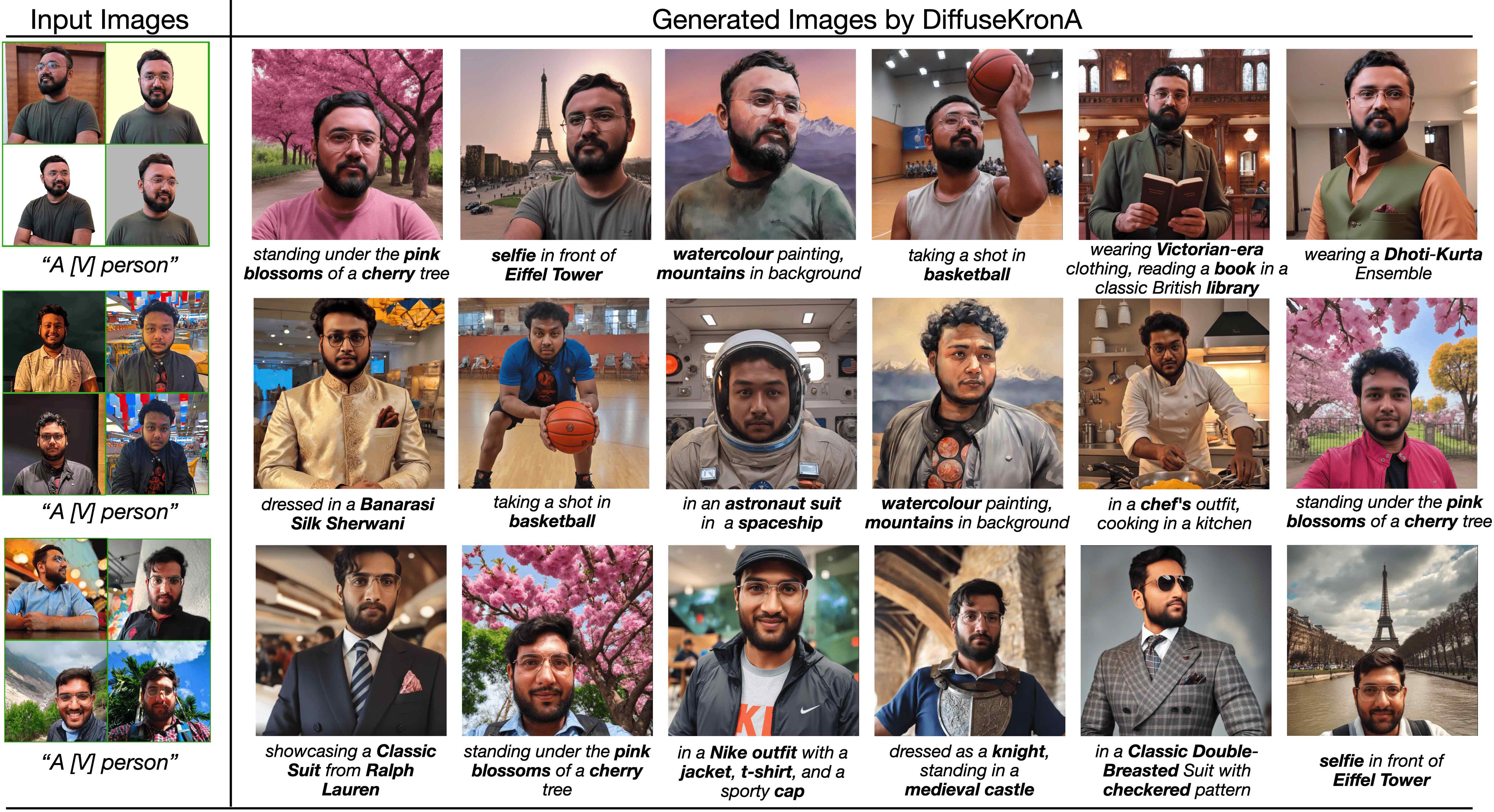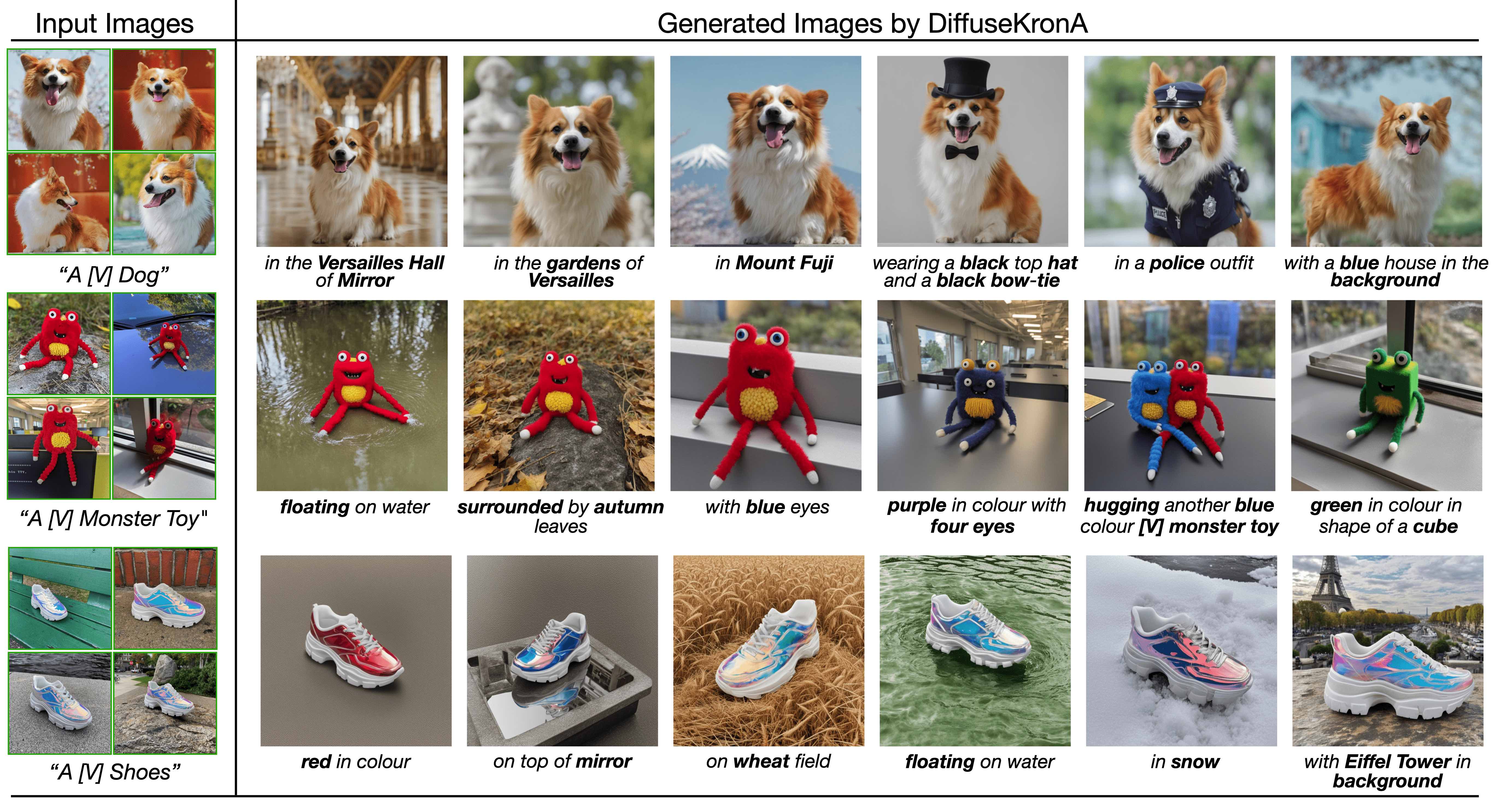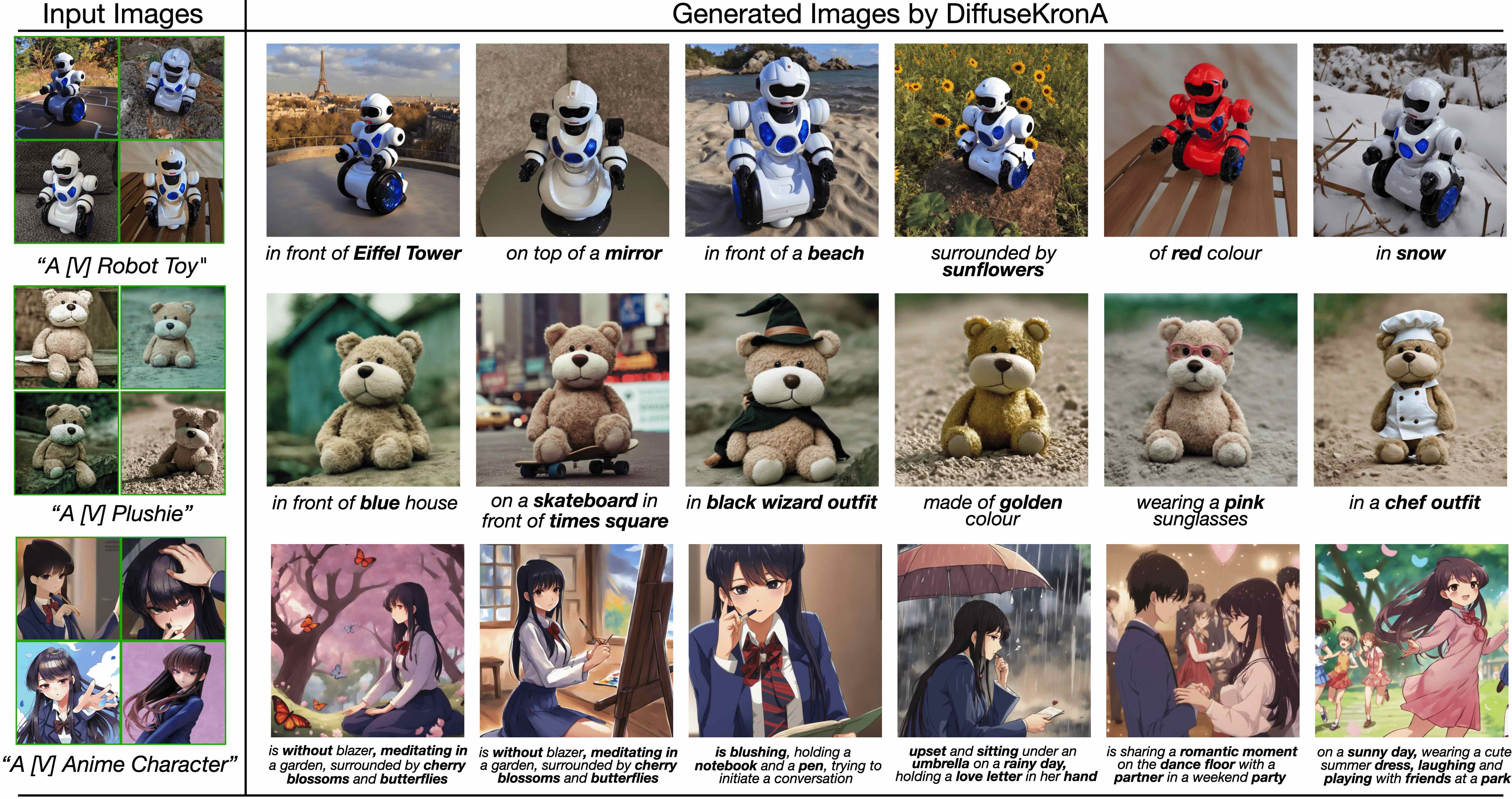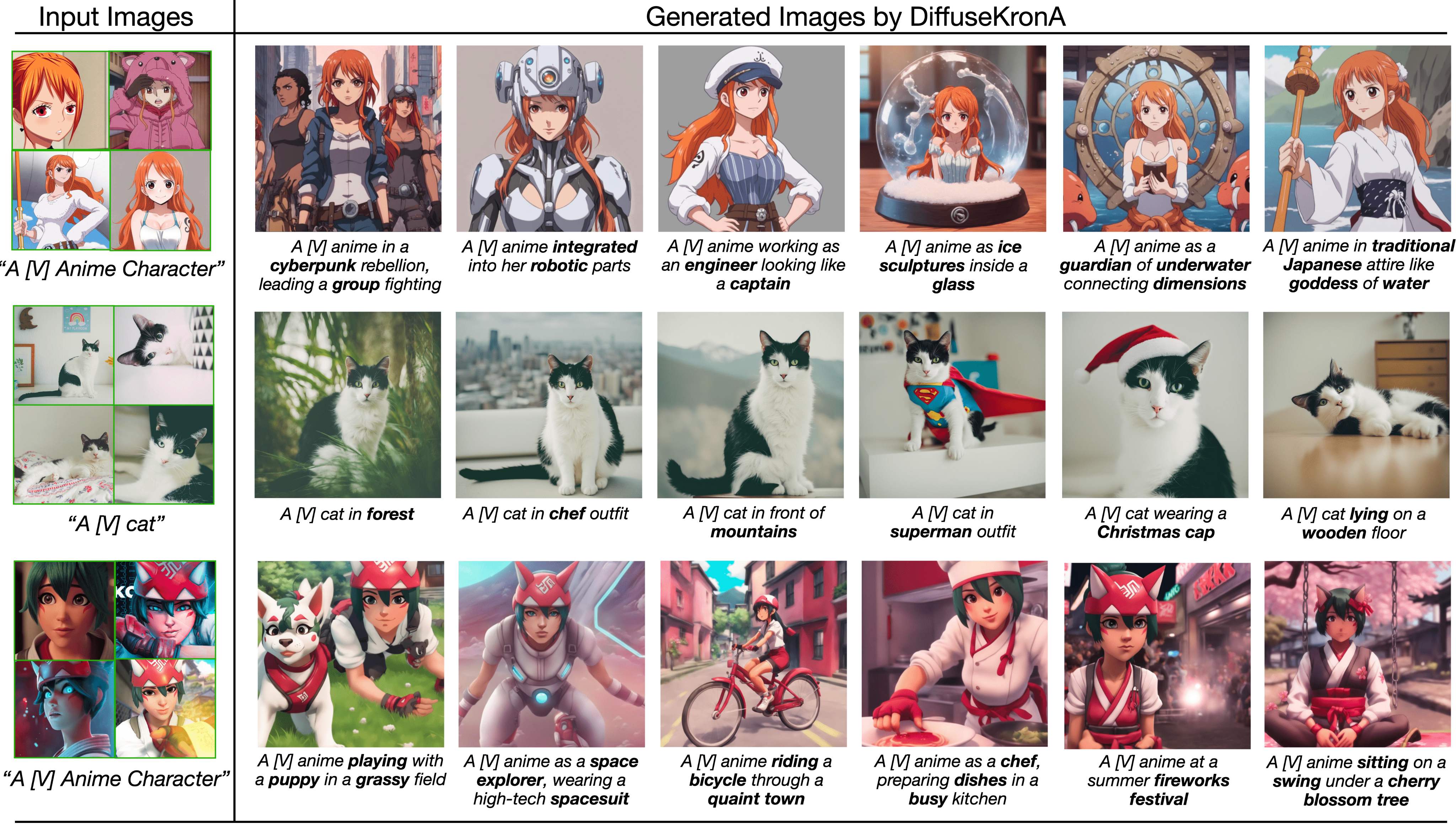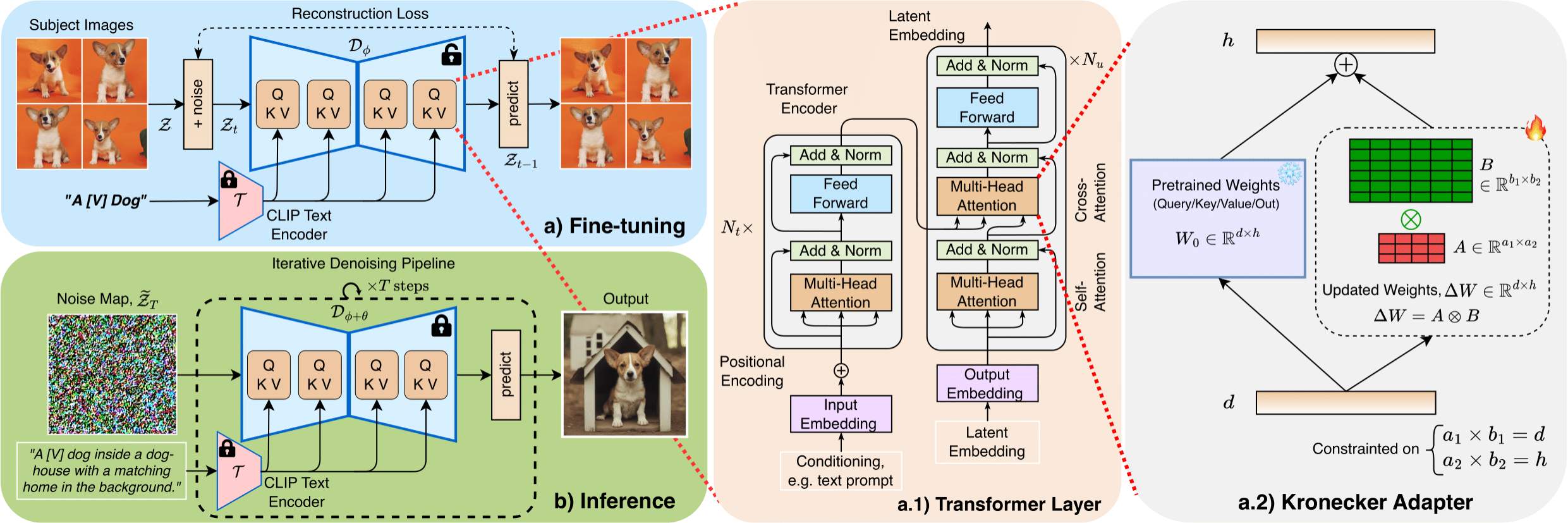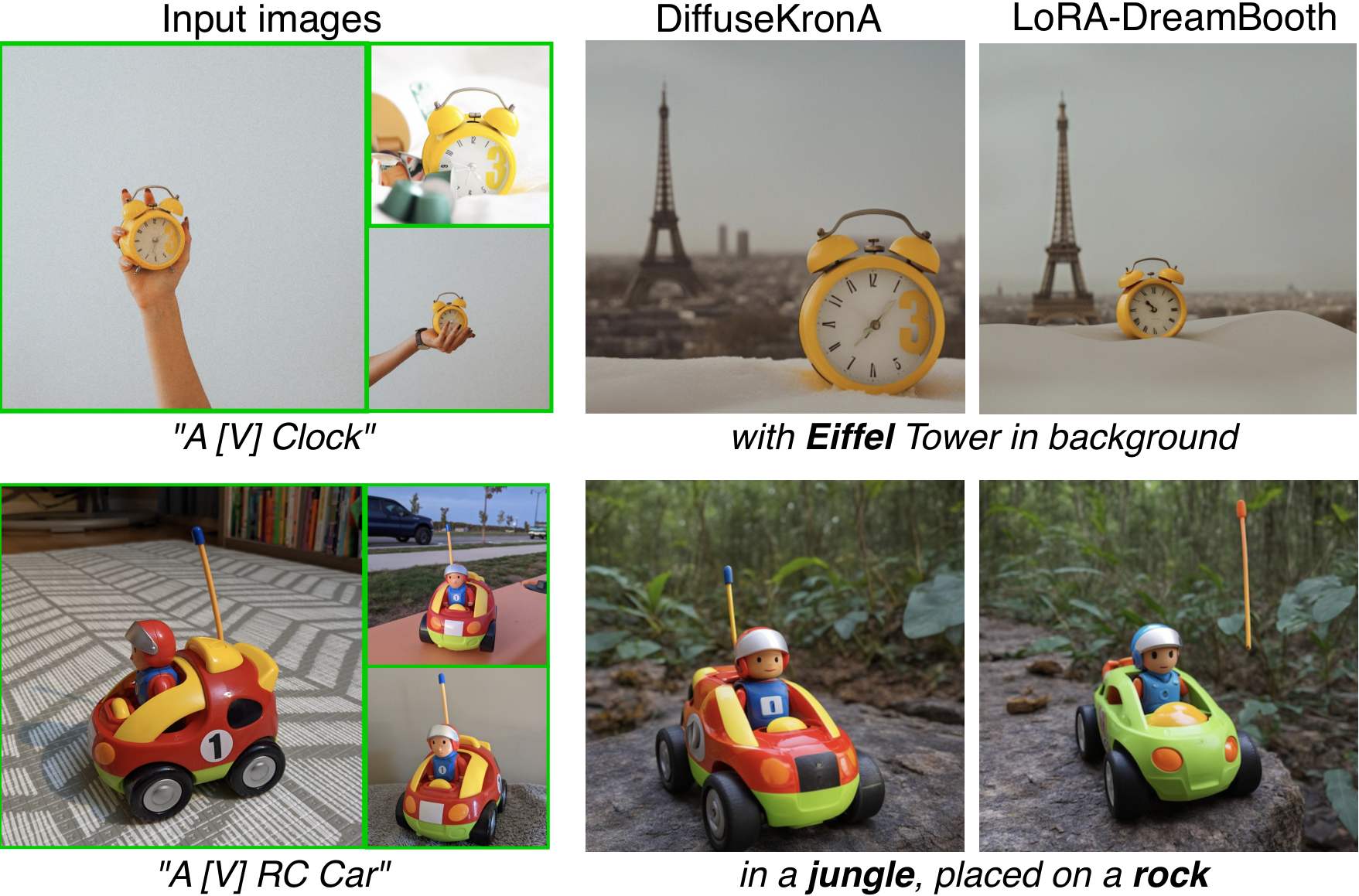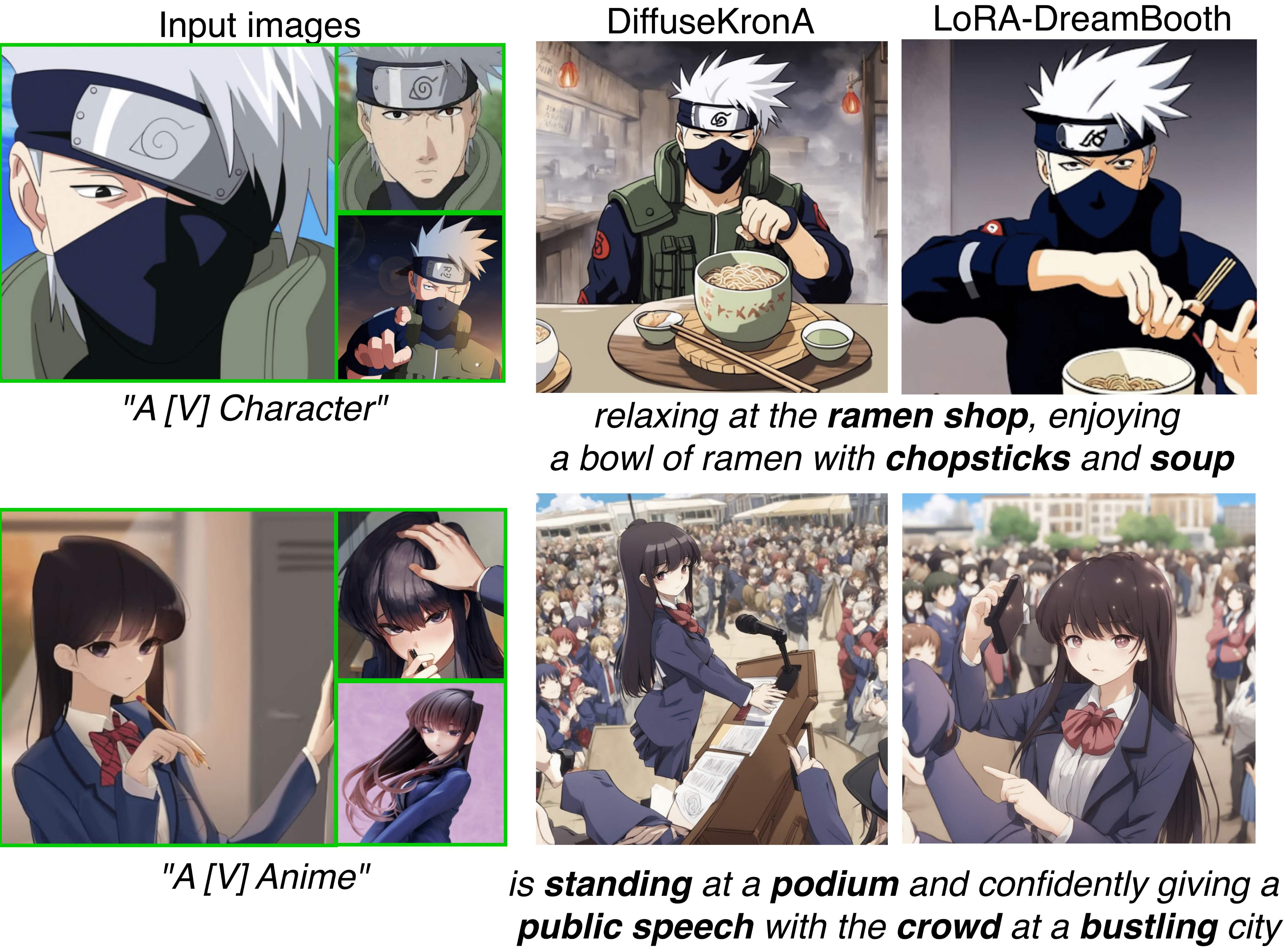The main idea of DiffuseKronA is to leverage the Kronecker product to decompose the weight matrices of the attention layers in the UNet model. Kronecker Product is a matrix multiplication method, that captures structured relationships and pairwise interactions
between elements of two matrices as follows
$$ A \otimes B=\left[\begin{array}{ccc} a_{1,1} B & \cdots & a_{1,a_2} B \\ \vdots & \ddots & \vdots \\ a_{a_1, 1} B & \cdots & a_{a_1, a_2} B \end{array}\right]$$
In contrast to the low-rank decomposition in LoRA, the Kronecker Adapter in DiffuseKronA offers a higher-rank approximation with less parameter count and greater flexibility, such that \(W_{\text{pre-trained}}+\Delta W =
W_{\text{pre-trained}} + A \otimes B\), where A and B are the Kronecker factors, and ⊗ denotes the Kronecker product. Kronecker Adapter reduces the computational cost by using the following equivalent matrix-vector multiplication:
\( (A \otimes B) x=\gamma\left(B \eta_{b_2 \times a_2}(x) A^{\top}\right)\), where \(\eta\) is the vectorization operator, and T is the transpose operator.
$$W_{\text{fine-tuned}}=W_{\text{pre-trained}}+\Delta W $$$$ \Delta W =A \otimes {B}$$
